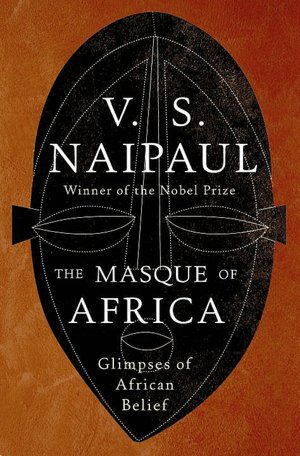The first chapter of The Masque of Africa: Glimpses of African Belief by V. S. Naipaul provides the authors observations on a trip to Uganda. I only want to address this first chapter, and in doing so I will pass up the overall theme of the book. The book deals with the interplay of Christianity and Islam, new arrivals in sub-Saharan Africa, with the older indigenous African beliefs and the effects of that interplay on Africans today, while serving as a basis of self exploration by Naipaul. There is a good review by Eliza Griswold in The New York Times for a more balanced view of the book.
This is probably unfair as it compares the prose of a Nobel Prize winning author noted for style with that of a man best known as a radio reporter, but having just finished The Great Gamble, I was pleased to be reading precise, beautiful prose.
Naipaul made a relatively short visit to Kampala in 2008 in the preparation of this book. He had previously spent an extended period there in residence at Makerere University in 1966. In the interim, Uganda had undergone a historical trauma under the dictatorships of Milton Obote and Idi Amin. Makerere University, which had been one of the best in Africa during his first visit decayed in quality during the troubles, indeed being the site of a pitched battle between opposing armies at one point, and is now seeking to again achieve quality. The population of Uganda increased by a factor of five or so between his visits.
 |
| Source of Naipaul portrait |
I spent some time in Uganda a few years before Naipaul's second visit. I was working as a World Bank consultant, helping to prepare a science and technology loan and evaluating an earlier grant to Makerere University. My experience was very different than Naipaul's. I met with university faculty and administrators, researchers and government officials (not to mention hotel clerks, waiters, and airline staff). In the context of World Bank related discussions, my Ugandan colleagues seemed similar to colleagues I had met in Latin America, Asia and indeed the United States. My role in Uganda encouraged my Ugandan colleagues to assume complementary roles. We discussed higher education, science and technology, funding for those. I also had the opportunity to meet with groups of Ugandans to check my ideas and to see Ugandans respond to Ugandans.
We did not discuss family nor personal history, much less religious beliefs. I could infer that individually the people I met had been through hellish times since they were all old enough to have lived through the hard times of the 1970s, but we did not discuss those times, focusing on recent accomplishments and future plans.
I have had the experience of living for several years in two foreign countries, working outside the expatriate communities in those countries, and making friends with whom one might share. In that context one not only begins to see how different people relate to the same culture, but how the underlying culture begins to affect people's conduct. The experience is a help in understanding that while I gathered some data on the Ugandan economy and its scientific and technological institutions, I was far from understanding my Ugandan colleagues as people.
Naipaul too had assumed a role on his 2008 visit, that of a famous author who had come to learn about the belief systems of (some) Ugandans. He too was selecting "informants" relevant to the role he assumed, and he too saw the complementary roles that the people he spoke to had assumed in response to his own role. Of course, not many of them would have had experience dealing with a foreign author interested in African beliefs.
One of the truisms of gathering information in a foreign culture (and indeed in one's own culture) is that what people tell you is what people tell you, but it is not necessarily "the truth, the whole truth, and nothing but the truth". People tell you what they want to tell you, for their own reasons, within the limits of what they remember, the trust you have established, and their own objectives in the meeting.

No comments:
Post a Comment